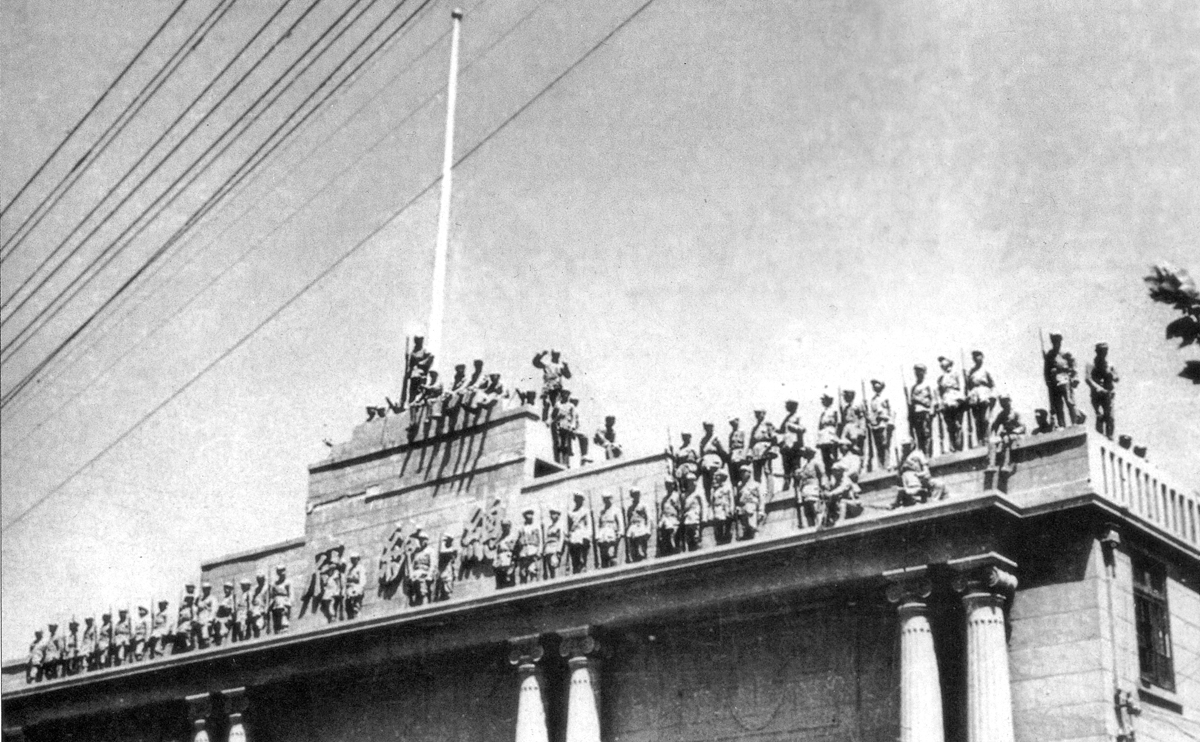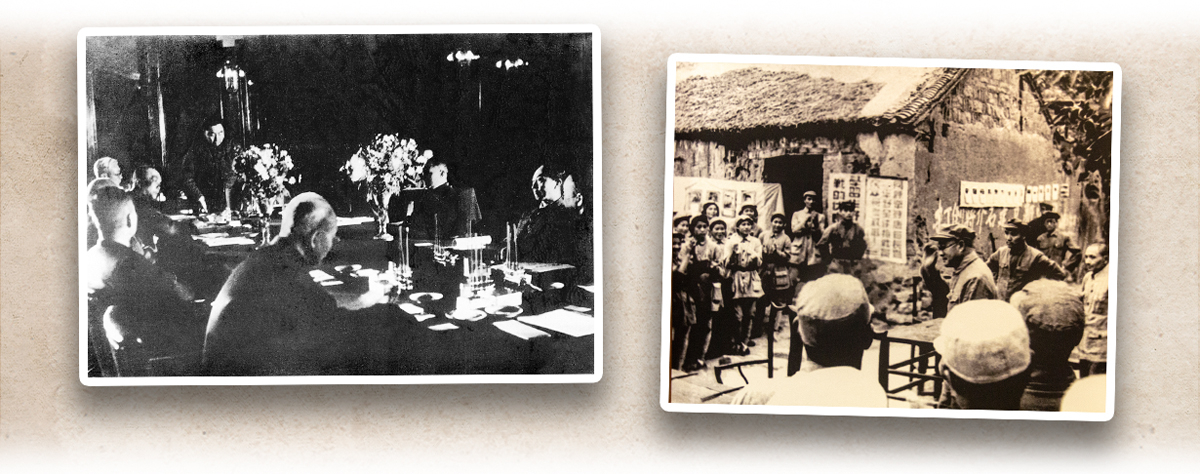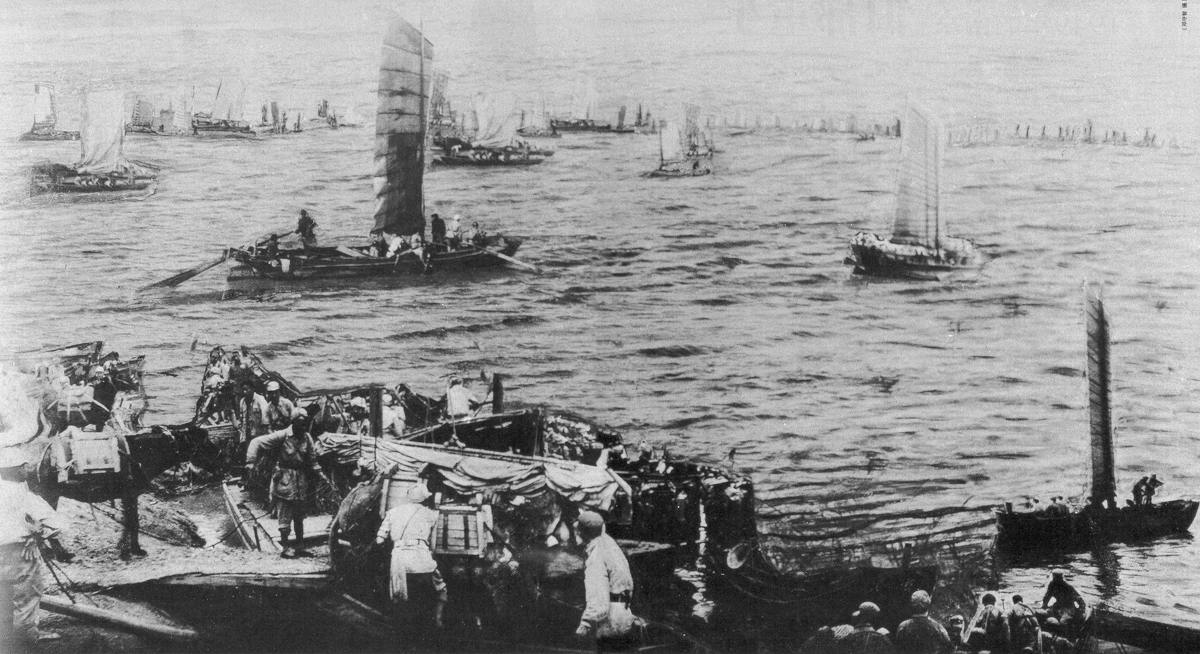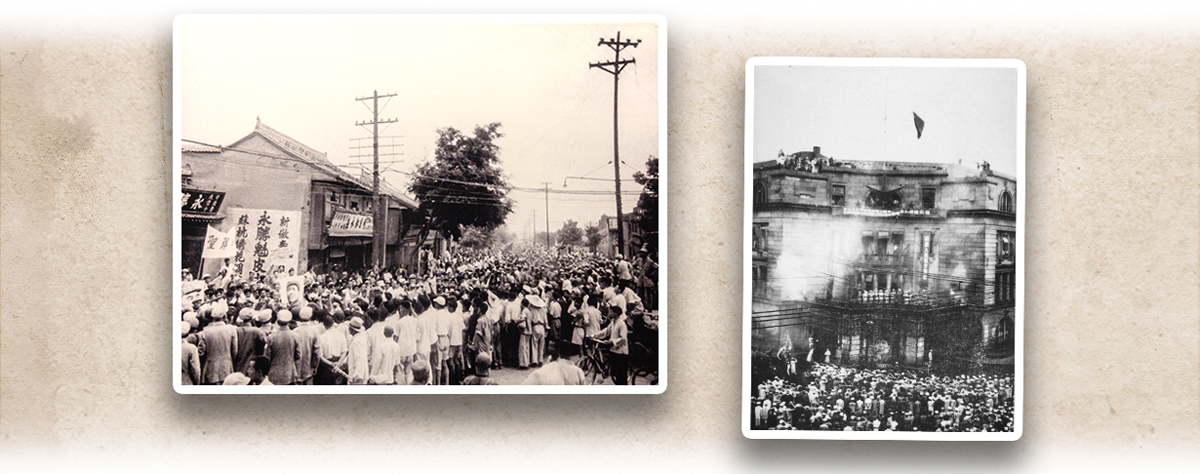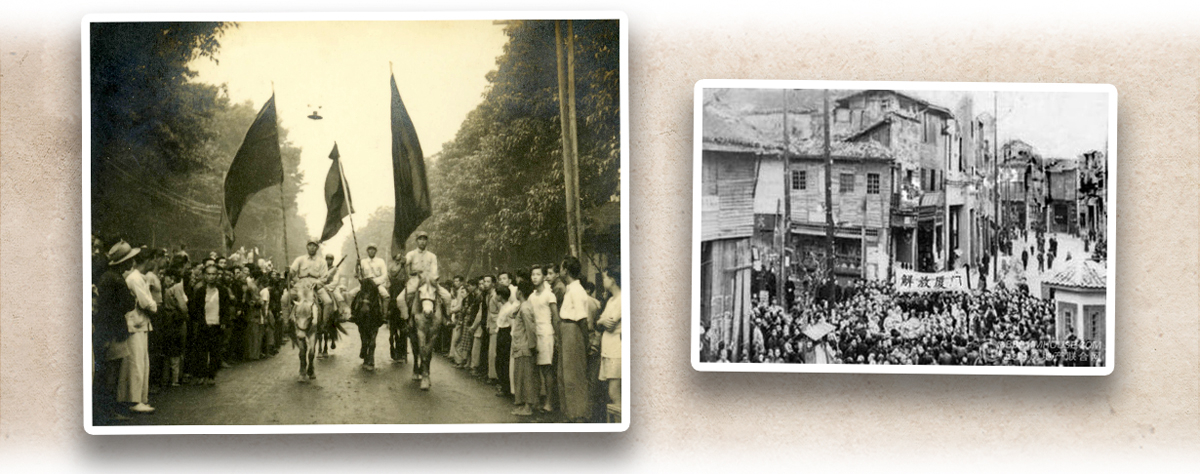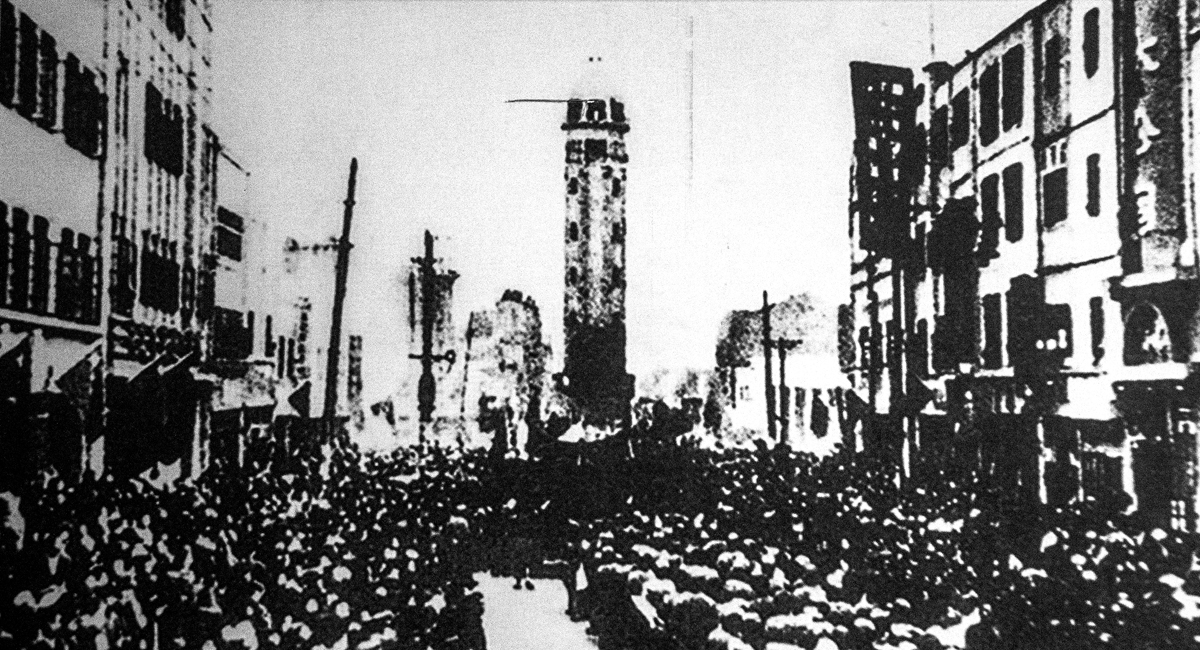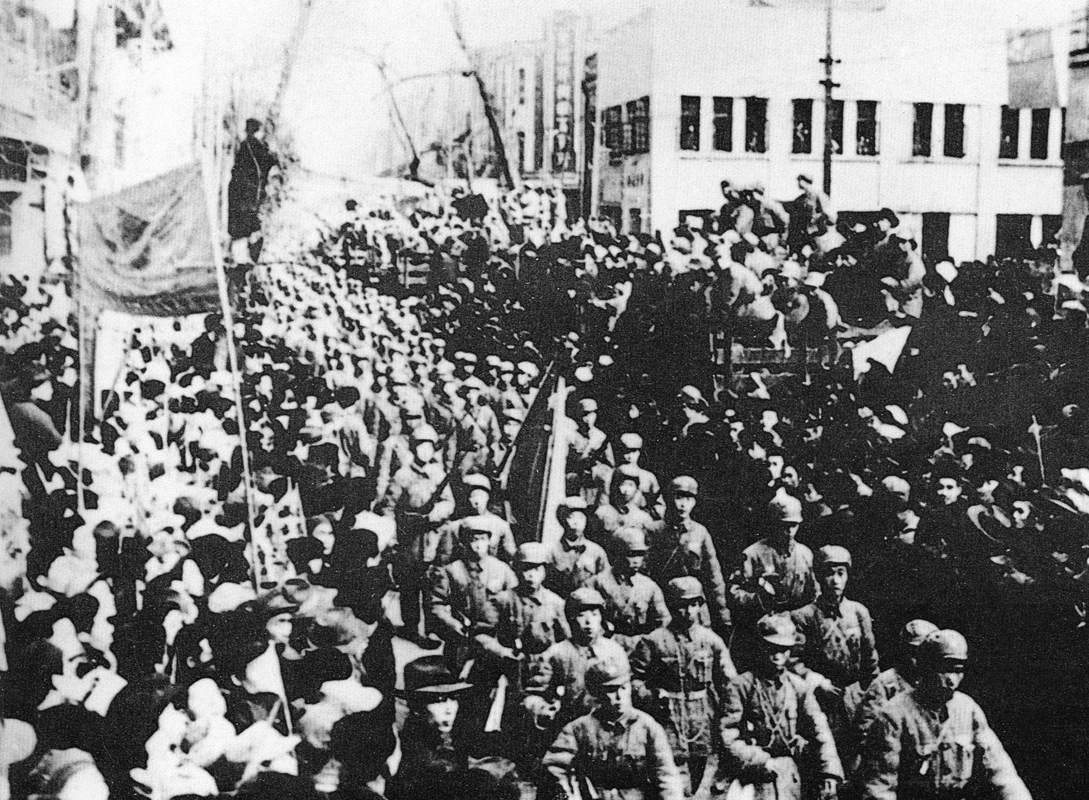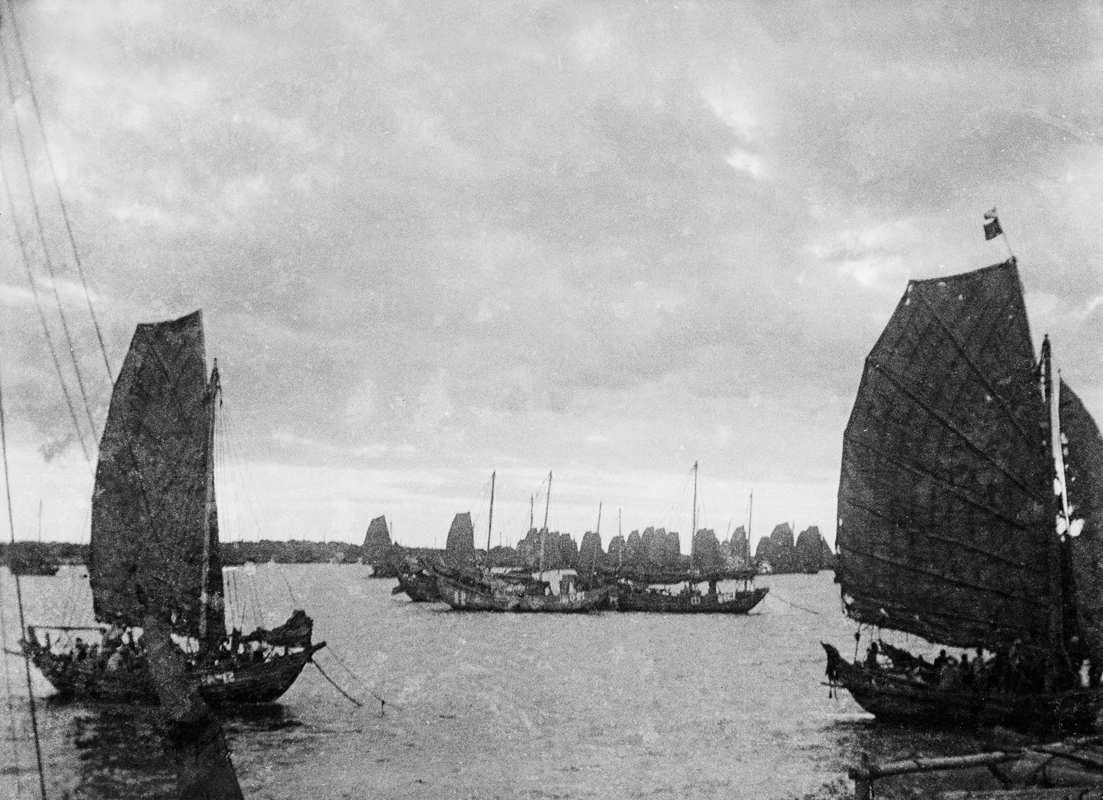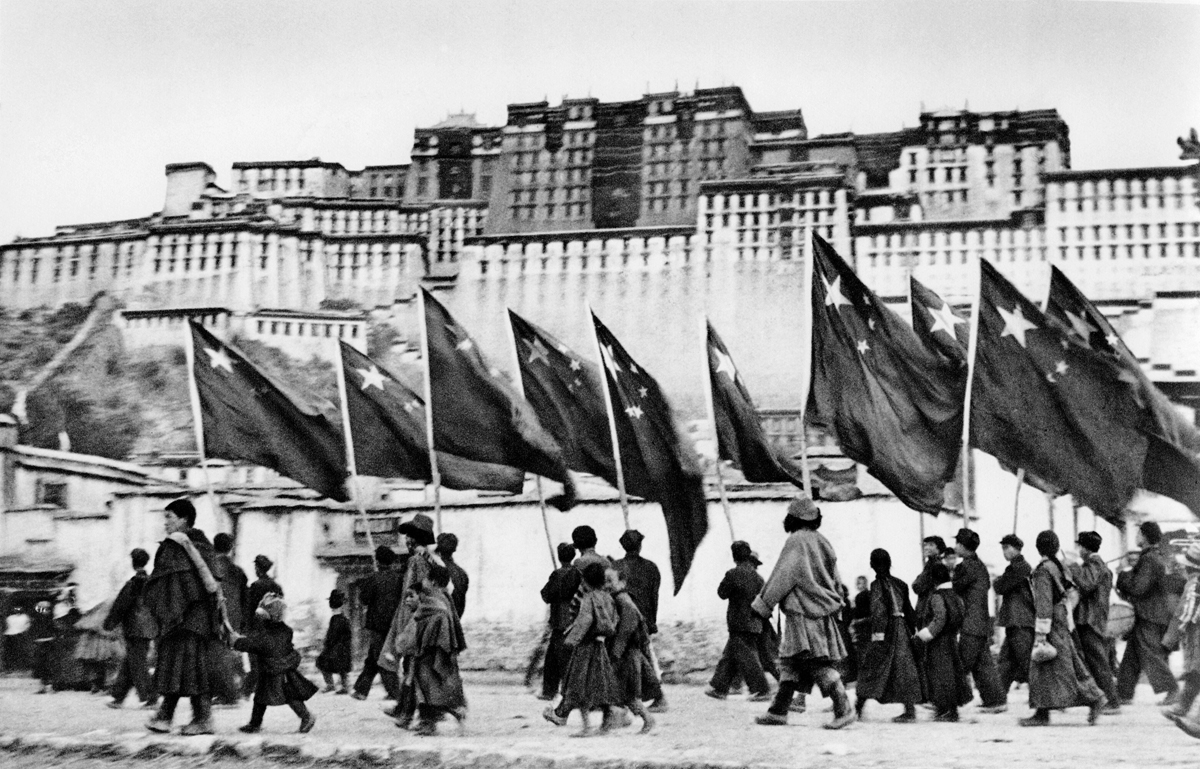At the end of January 1949, the People’s Liberation Army (PLA) entered Beiping (北平, now Beijing﹝北京﹞), marking the decisive victory of the Chinese Communist Party (CCP, 中國共產黨) in the three major campaigns. The result of the Chinese Civil War was decided. Forced by defeats on the battlefield, Chiang Kai-shek (蔣介石) proposed peace talks to his opponents on New Year’s Day 1949. He then swiftly resigned and was succeeded by Li Zongren (李宗仁) as Acting President. In April, Zhang Zhizhong (張治中) led the Kuomintang of China (KMT, 中國國民黨) delegation to Beiping for peace talks with Zhou Enlai (周恩來) and other CCP representatives. However, the CCP’s demands to incorporate the National Army (NA) and punish war criminals were rejected, and the peace talks thus broke down. The PLA then launched the Yangtze River Crossing Campaign and captured Nanjing (南京), the capital of the National Government, on 23 April.
With the victory of the Yangtze River Crossing Campaign, the four major PLA field armies set off from four directions: the First Field Army advanced northwest and took control over the provinces of Xinjiang (新疆), Shaanxi (陝西), Gansu (甘肅), Ningxia (寧夏), and Qinghai (青海); the Second Field Army advanced southwest and took control over Tibet and provinces including Sichuan (四川); the Third Field Army advanced south from Southeast China to capture Shanghai (上海) and Xiamen (廈門), and went straight towards the western Taiwan Strait (台灣海峽); the Fourth Field Army advanced into Central and South China, claiming Wuhan (武漢), Changsha (長沙) and Guangzhou (廣州), and finally crossing the sea to capture Hainan Island (海南島). Facing the PLA’s strong offensive, the National Government moved to Guangzhou in early February 1949, then to Chongqing (重慶) and Chengdu (成都) in succession after October, and finally to Taipei (台北). The mainland regime finally changed hands.
Footnotes:
1. In December 1947, the National Revolutionary Army (NRA) was renamed the Republic of China Armed Forces, and was generally called the National Army (NA, 國軍﹝Guojun﹞in Chinese).
2. In May 1948, the Nationalist Government was renamed the Government of the Republic of China, and was generally called the National Government (國民政府﹝Guominzhengfu﹞or 國府﹝Guofu﹞in Chinese).
|
|
It is said that the Soviet Union intended to divide China into the control of the CCP and the KMT with the Yangtze River as the demarcation line. Why did the CCP not accept this proposal? |
|
|
See answer below. |
Left: In April 1949, the National Government delegation holding peace talks with the CCP in Beiping. At that time, the NA could not stop the PLA from crossing the Yangtze River (長江). Right: the General Front Committee of the Huaihai Campaign (淮海戰役) was put in charge of the Yangtze River Crossing Campaign by the CCP Central Military Commission. The photo shows Liu Bocheng (劉伯承, wearing glasses) and Deng Xiaoping (鄧小平, first from right) making deployment decision before the war.
On 20 April 1949, the PLA began to cross the Yangtze River, marking the start of the Yangtze River Crossing Campaign.
On 23 April 1949, the PLA captured Nanjing, the capital of the National Government. It occupied the Presidential Palace, and built on the victory to advance nationwide.
Left: the PLA displaying Mao Zedong’s portrait when making an entrance into Xi’an (西安) after the seizure on 20 May 1949. Right: the PLA capturing Shanghai on 27 May 1949.
Left: in February 1949, the National Government moved south to Guangzhou. On 14 October, the PLA captured Guangzhou. On 18 October, it made an entrance into the city with civilians watching on both sides of the street. Right: on 17 October 1949, the PLA capturing Xiamen and reaching the western Taiwan Strait.
The PLA advancing into Xinjiang. In September 1949, many KMT officials and troops stationed in Xinjiang surrendered to the CCP, enabling a smooth advance for the PLA.
In October 1949, the National Government once again moved west to Chongqing. On 30 November, the PLA captured Chongqing. The photo shows the PLA making an entrance into the city.
The PLA making an entrance into Chengdu after the seizure. Before the PLA occupied Chongqing, the National Government had announced to move west to Chengdu on 29 November 1949. On 27 December, the PLA captured Chengdu. The National Government finally moved to Taipei.
The PLA crossing the Qiongzhou Strait (瓊州海峽) in April 1950 and capturing the whole Hainan Island on 1 May.
In 1951, the PLA passing the Potala Palace in Lhasa, Tibet. On 23 May 1951, the Agreement of the Central People’s Government and the Local Government of Tibet on the Measures for the Peaceful Liberation of Tibet was signed, which enabled the PLA to enter Lhasa without a fight. At this point, the government of the People’s Republic of China established on 1 October 1949 began its full domination of Mainland China.
|
|
It is said that the Soviet Union intended to divide China into the control of the CCP and the KMT with the Yangtze River as the demarcation line. Why did the CCP not accept this proposal? |
|
|
Right after World War II, the Soviet Union and the United States did not want to get involved in any regional civil wars, and thus strongly advocated KMT-CCP peace talks. However, it is difficult to draw a conclusion on whether Joseph V. Stalin, the leader of the Soviet Union, dissuaded the CCP from crossing the Yangtze River between 1948 and 1949 due to a lack of first-hand archives. Future decryption of archives and historical research may reveal the truth. The CCP would gain a complete control of the country undoubtedly after winning the three strategically decisive campaigns. It was thus certain that the CCP would never cede the south of the Yangtze River to the KMT. Moreover, in view of the lessons in Chinese history, the CCP would risk endless troubles and even failure if it did not continue its victorious pursuit. Therefore, Mao Zedong (毛澤東), the leader of the CCP, wrote a poem for the victory of the Yangtze River Crossing Campaign for the spirit of “building on the victory to pursue the tottering foe to conquer through to the end, and not be another Xiang Yu (項羽)”. |
Sources of most photos used in this feature piece: Fotoe.




